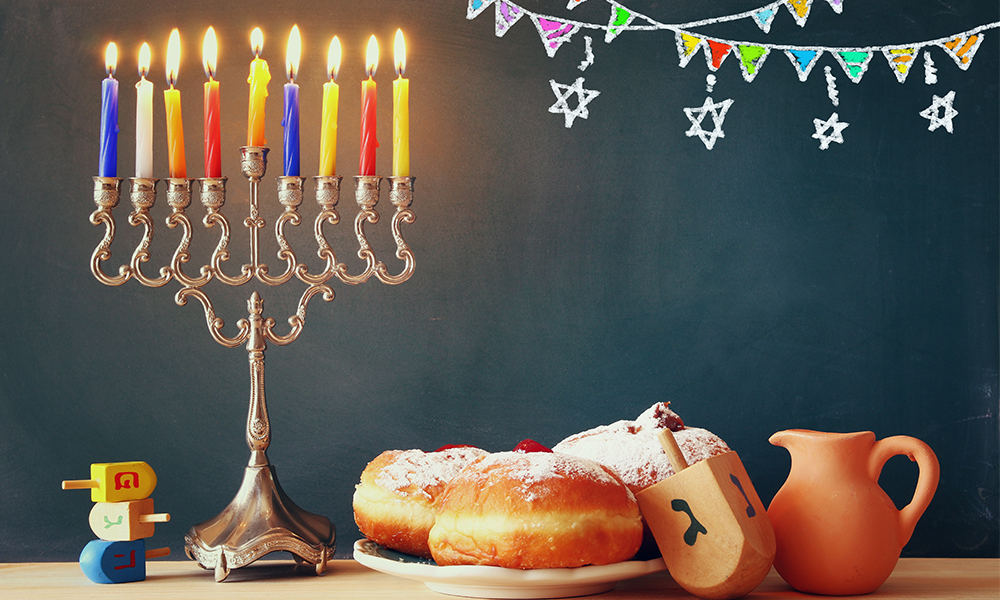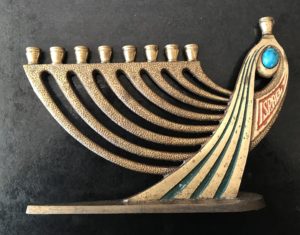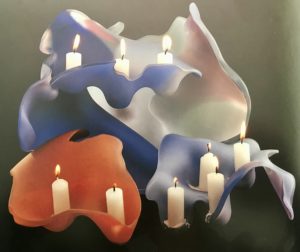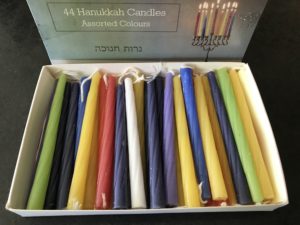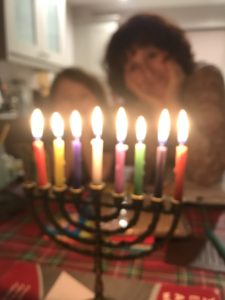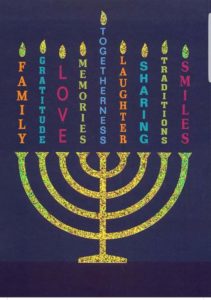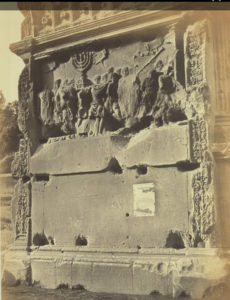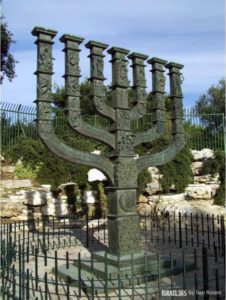The meaning of the word Chanucah (also spelled as Chanukah, Hannukkah etc) is ‘dedication’.
Chanucah celebrates the rededication of the Temple in Jerusalem in 165 B.C.E after the victory of the Maccabees over the Syrians. (Judea, as it was known at the time, was part of the Greek Empire, controlled by Antiochus IV, King of Syria).
Chanucah, also known as the ‘Festival of Lights’, is actually a minor festival commemorating this historical event and the Jews’ freedom from religious persecution. Chanucah lasts for eight days, starting on the 25th of the Jewish month of Kislev – the date of the rededication of the Temple. This corresponds to late November/December. (See The Jewish Year).
Because of its proximity to Christmas it has grown in significance and popularity and has almost become the Jewish ‘alternative’! Some cities now have a giant Chanuciah – (Chanucah candlestick see below) in public parks.
In Israel, a torchlight marathon is run from Modiin, the home of the Maccabees, to Jerusalem.
Background
The festival is not mentioned in the Torah, the Books of the Prophets or the Writings (ie: the Tenach). It is based on historical events described in a later collection of writings called the Apocrypha; specifically in the two books of the Maccabees I and II. (See Jewish Festival Stories).
The legend says that before the Jews could rededicate the Temple to God, they needed to light the Menorah -the oil-filled candlestick that was the Everlasting Light in the Temple. However they found only a small jar of oil containing enough for one day but by a ‘miracle’ it lasted for eight!
(It is interesting to note that there was no mention of the oil in the Books of the Maccabees – it was first mentioned in the Talmud in 500 C.E. probably because the rabbis wanted to play down the purely military aspect and play up the spiritual element.)
What Happens
Every evening at sunset, we light a candle on the nine branched Chanuciah- the Menorah (candlestick) specific to Chanucah. Here are some examples of different Chanuciah designs:

The Chanuciah originates from the first century C.E. and has eight branches, one for each night of Chanucah and one for the Shammash, the servant light. On the first night the Shammash is lit with a match then it is used to light one candle, whilst the Chanucah Blessings are said. (see below). The Chanuciah is then placed in the window for all to see. For the next seven nights a new Shammash and a new extra candle are added until the Chanuciah is full. Forty four candles are needed in total.
The candles are placed in the Chanuciah from right to left but are lit from left to right ie: the newest one first.
In some families everyone lights their own Chanuciah; in others, children and parents take turns lighting the candles.
No work is permitted whilst the candles are burning.
(On Friday night, they are lit before the Shabbat candles. On Saturday night, they are lit after Havdalah.)
Chanucah Blessings
Over The Candles
We praise You Lord Our God, King of the Universe. You sanctify us by Your Commandments and command us to kindle the Chanucah lights.
(Version for youngsters).
We praise You Lord Our God, King of the Universe. You make us feel special by following your rules and you tell us to light the Chanucah lights.
We praise you Lord Our God, King of the Universe. You performed miracles for our ancestors a long time ago, at this time of year.
On The First Night
We praise You, Lord Our God, King of the Universe. You have kept us alive, sustained us and enabled us to reach this season.
After The Candles Are Lit
These Chanucah lights are for us to enjoy. May their glow remind us to give thanks for God’s wondrous acts of deliverance.

Traditions
The Dreidel / Sevivon Game
This is a very popular game played whilst the candles are burning. The Dreidel is a four sided spinning top. On each side is a letter of the Hebrew Alphabet- ‘Nun’, ‘Gimmel’, ‘Hay’ and ‘Shin’. These letters stand for the sentence ‘A Great Miracle Happened There’. (In Israel one can buy a different version which says ‘A Great Miracle Happened HERE’).
(See Practical Ideas and Activities for Teaching Judaism).
Each player starts with a pile of counters, raisins or sweets (the fun version!) and there is a pile in the centre. Everyone takes turns to spin the Dreidel and the side you land on tells you what to do.
The letter ‘Nun’ means do Nothing (ie: miss a turn), the letter ‘Gimmel’ means Get or Grab all the central pile, the letter ‘Hay’ means take Half and the letter ‘Shin’ means Share one back. (The Israeli version is ‘Pay’ – Put one back.)
Before the next round is played, everyone puts one piece back in (or opens another packet of sweets!).
Gifts and Cards
It is traditional to give small presents each night of Chanucah. These include Chanucah Gelt -chocolate coins. These represent the coins minted to commemorate the Maccabean victory. (Luckily they are always in the shops at this time of year!).
Chanucah is also a time for Tzedakah- helping those in need. We exchange Chanucah cards – See some examples below.
Food
It is customary to eat something every day of Chanucah that has been fried in oil, remembering the miracle in the story.
The most traditional foods eaten are Potato Latkes (Pancakes) and Sufganyot (Doughnuts). (See Traditional Jewish Recipes.)

Summary
Chanucah is known as a festival of two miracles- the legend of the oil and the victory of the few over the many. Some Jews believe the oil legend, others prefer to see it as a symbol of the ‘light of the Torah’ which has continued to shine throughout our history and which is the ‘real’ miracle. Just as significant is the military miracle. The Maccabees were fighting for their right to be ‘different’. In history, Jews have fought against being assimilated into a culture which no longer allows the right to practice their faith. The seven branched Menorah is a symbol of this spiritual and political victory and has become one of the most recognisable symbols of Judaism. The original Menorah was taken by the Romans when they destroyed the Temple in 70 C.E. and this is depicted on the Titus Arch in Rome.
Today a Menorah stands outside the Knesset and it is the official emblem of the State of Israel.
